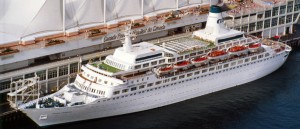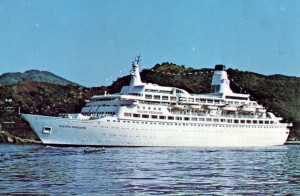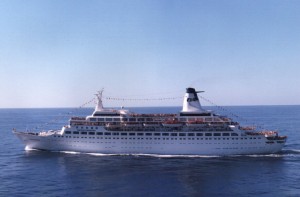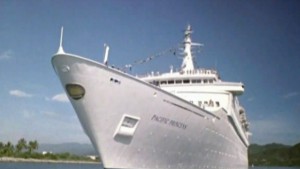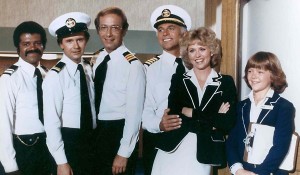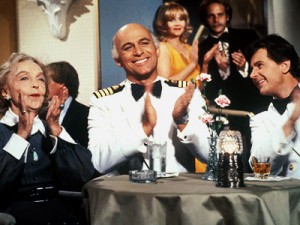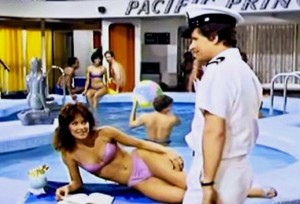MERCHANT SHIP PACIFIC PRINCESS
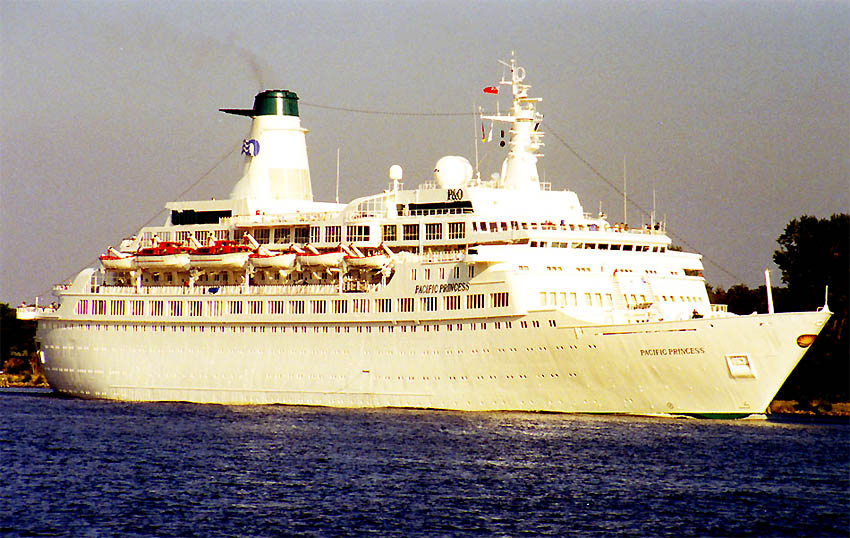
The ship began operation in 1971 with Flagship Cruises, under the name Sea Venture. In April 1975, she was sold to Peninsula and Oriental Steam Navigation Company’s newly acquired Princess Cruises along with sister ship Island Venture. The pair were renamed Pacific Princess and Island Princess.
Princess Cruises agreed to have their cruise ships featured in the television romantic comedy anthology series The Love Boat, which debuted in 1976 as a made for TV movie and as regular show in 1977. The ship featured in nearly every episode of the series (which was filmed primarily on sets in a production studio) was Pacific Princess, although other ships also appeared, including Island Princess. The term "Love Boat" was heavily used by Princess Cruises in their marketing, and became synonymous with Pacific Princess. The success of the up-beat television show, which remained on the air until 1987, is largely credited with the increase in popularity of cruise ship travel in North America.
In 1998 Pacific Princess was impounded by police in Piraeus, Greece after 25 kg of heroin was found on board, smuggled by two Filipino crewmen. According to police sources quoted in the BBC report at the time, there was evidence the ship had become a major tool for drug smugglers in the Mediterranean.
Pacific Princess was laid up after being seized by Italian authorities due to a failed safety test. She was sold in 2001, but was leased back and continued to operate as part of the Princess fleet until 2002, when the former Renaissance Cruises R3 replaced her and took her name.
Pacific Princess made her final voyage with Princess Cruises in October/November 2002, sailing from New York City to Rome, Italy. She then began operating for Pullantur Cruises of Spain as Pacific, sailing in the Caribbean. Pacific was later chartered to and operated by CVC in Brazil during the Southern summer and by Quail Cruises in Spain during the Northern Summer.
Pacific was 168.8 m (554 ft), with a 24.7 m (81 ft) beam, and was built at Nordseewerke, West Germany. She was propelled by four medium speed Fiat Diesel engines with a combined power output of 18,000 shaft horsepower. The engines were individually clutched and geared in pairs to each of the two shafts that drive controllable pitch propellers. This enabled one or more engines to be shut down and declutched as required. As Pacific Princess, her tonnage was 20,636 gross tonnes and she carried 646 passengers at a top speed of 21.5 knots (39.8 km/h; 24.7 mph), cruising at 20 knots (37 km/h; 23 mph). As Pacific, her capacity was increased to 780 passengers and cruising speed reduced to 18 knots. Country of registry was the Bahamas.
THE LOVE BOAT

The Love Boat is an American television series set on a cruise ship, which aired on the ABC Television Network from September 24, 1977, until February 27, 1987. The show revolves around the ship's captain and a handful of its crew, with several passengers – played by different guest actors for each episode – having romantic and humorous adventures. It was part of ABC's popular Saturday night lineup that included Fantasy Island until that show ended in 1984.
The original made-for-TV movie on which the show was based was itself based on the nonfiction book The Love Boats by Jeraldine Saunders, a real-life cruise director. Two more TV movies (titled The Love Boat II and The New Love Boat) would follow before the series began its run.
The executive producer for the series was Aaron Spelling, who produced several successful series for ABC from the 1960s into the 1980s.
“Soon we’ll be making another run!”
[yt]https://www.youtube.com/watch?v=m_wFEB4Oxlo[/yt]


